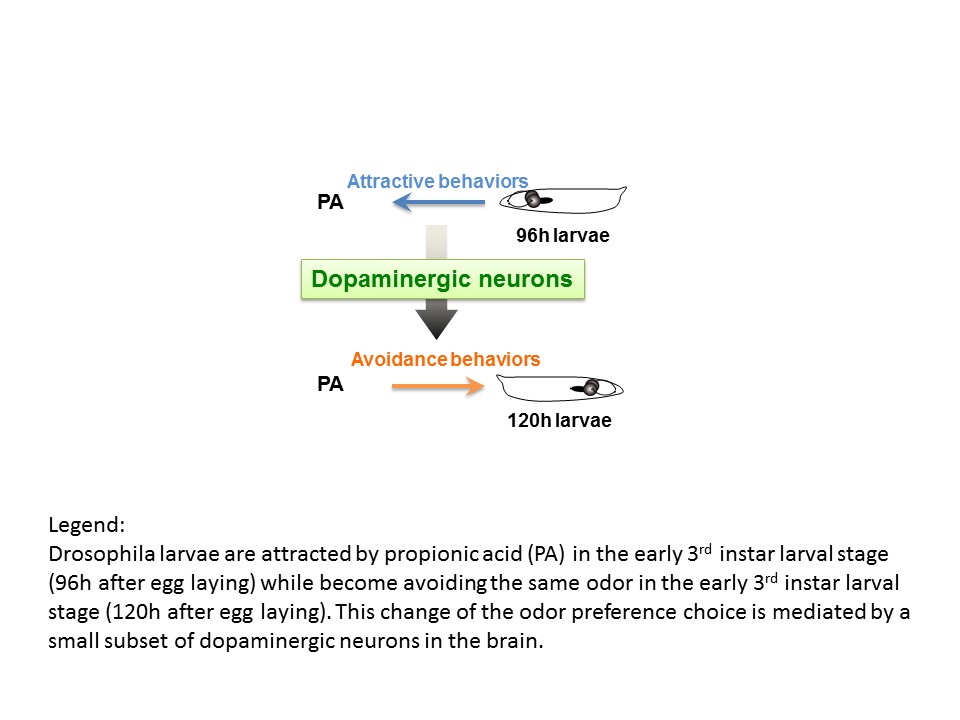Kazuo Emoto (The University of Tokyo)

“Neural basis for odor preference choice in Drosophila larvae”
The behavior of animals is flexible and can change dramatically in response to the environment, nutritional state, or even age, among other factors. However, the neural basis of how external and internal cues modify innate behavior remains elusive. Appropriate preferences for odor can be critical for an animal’s survival. Innate odor preferences are not static in some animals, including the fruit fly Drosophila, which are attracted by some chemicals in the feeding larval stage but seem to avoid the same chemicals in the adulthood. This suggests that the neuronal circuits that determine the odor preference have been modified during metamorphosis. To elucidate the neuronal mechanisms underlying the preference change, we examine neurons involved in larval odor preference behaviors by regulating neuronal functions. To do that, we have established a quantitative assay system for larval chemoattractive behaviors and started a couple of genetic screens. Through these studies, we would like to understand how the brain makes decision and also change the decision against the same sensory information.
Recent Publications
1. Kanamori T, Yoshino J, Yasunaga K, Dairyo Y and Emoto K: Local endocytosis triggers dendrite thinning and pruning in Drosophila sensory neurons. Nature Communications 6: 6515 (2015).
2. Yasunaga K, Tezuka A, Ishikawa N, Dairyo Y, Togashi K, Koizumi H and Emoto K: Adult Drosophila sensory neurons specify dendrite territories independently of dendritic contacts through the Wnt5-Drl signaling pathway. Genes Dev 29: 1763-1775 (2015).
3. Kanamori T, Kanai M, Dairyo Y, Yasunaga K, Morikawa R and Emoto K: Compartmentalized calcium transients trigger dendrite pruning in Drosophila sensory neurons. Science 340: 1475-1478 (2013).
Posted:2016/03/10

